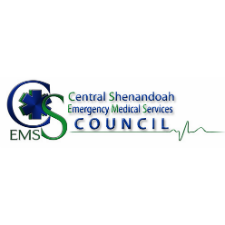
“It was a year of continued innovation across the organization,” said Executive Director Chad Blosser. “CSEMS continued its innovation with EMS educational programming through the development and implementation of a new online Emergency Medical Technician (EMT) program. CSEMS was among the first accredited training sites in the state to offer EMT programs using a hybrid, or blended learning, format to teach EMT programs.”
“Typical EMT education requires a set schedule of class meetings over a fivemonth period. Using the online/hybrid approach, all didactic content is moved online to an in-house Learning Management System (LMS)” he continued. “There are three distinct parts of each program: didactic (classroom), psychomotor (skills), and clinical internship. The didactic or classroom portion of the program is conducted online making use of the Council’s LMS and a required electronic textbook.”
“During the course of their online training, students are required to attend mandatory psychomotor, or hands-on, skill sessions. Psychomotor sessions provide students with an opportunity to train and learn from staff educators as well as other students in the program. We are very proud of this new approach to EMS education and the opportunities it presents to the general public by increasing access to EMT training for people who want to help their community but do not have time in their busy schedules for a traditional classroom program.”
All initial certification programs conducted by the Central Shenandoah EMS Council are accredited by the Virginia Office of EMS (OEMS). These programs include EMT, Advanced EMT and Intermediate.
Accredited programs follow a competency-based approach requiring students to complete scenario based training in order to achieve a required number of competencies in specific skills areas. The report highlights the success rates of CSEMS programs.
Program graduates are required to take a national certification exam conducted by the National Registry of EMTs. During the fiscal year, the various program levels recorded the following pass rates on the national examination.
- Emergency Medical Technician (EMT) – 89% (national average 80%)
- Advanced Emergency Medical Technician (AEMT) – 83% (national average 71%)
- Intermediate – 100% (national average 91%)
Additionally, the Council’s Medical Control Review Committee (MCRC) evaluated, modified and implemented multiple prehospital treatment protocols including, but not limited to:
- Introduction of a “Safe Medication Administration Practices” protocol to assist in the prevention of medication errors.
- Updated all cardiac resuscitation protocols based on the 2015 American Heart Association Guidelines for Emergency Cardiovascular Care
- Added epinephrine infusion guidelines for the treatment of various cardiovascular and immunological related emergencies.
- Modified the allergic reaction/anaphylaxis protocol to align with current pharmacological practices
- Modified the burn treatment protocols following feedback from area burn centers.
- Updated newborn and neonatal resuscitation protocols based on the 2015 American Heart Association Guidelines for Emergency Cardiovascular Care.
- Updated the selective spinal immobilization/clearance protocol to resolve ambiguity.
- Modified the trauma triage decision scheme.
- Added a vaccination administration protocol permitting certain advanced life support providers to administer vaccinations.
The Annual Report 2015 covers the work of the Council and its staff and Executive Committee. The report contains unaudited financial statements for the fiscal year. It describes the Council’s support for its 60 member EMS agencies with an emphasis on EMS education, pre-hospital treatment protocols and system wide trauma and general performance improvement.
The report highlights key activities, meetings and committees on which staff and Board members serve—at the local, regional and state level.










